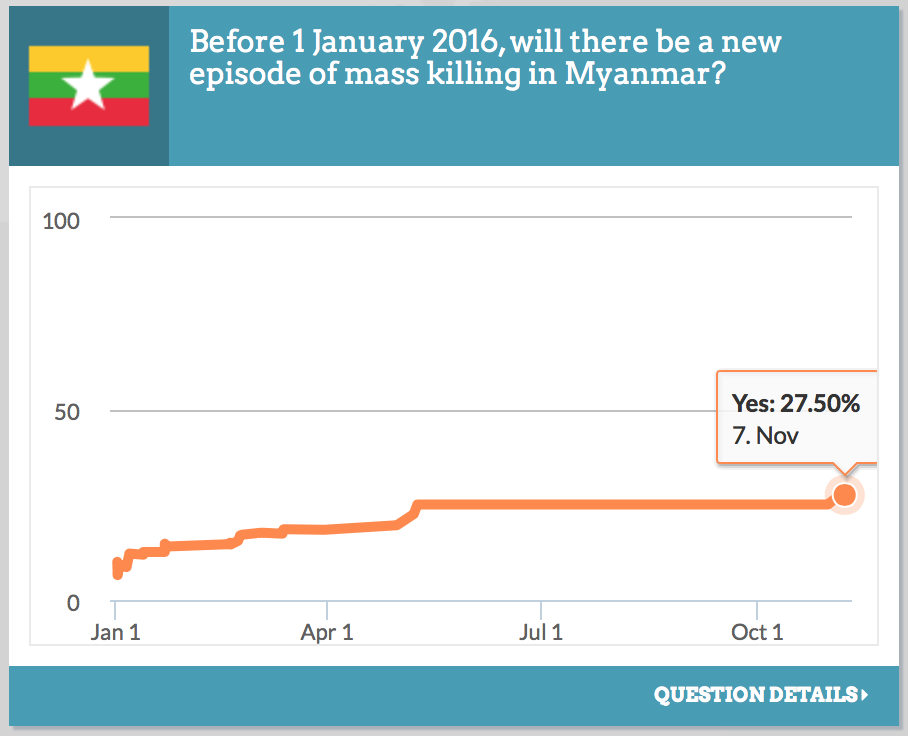November 07, 2015

This Sunday, Myanmar will vote in what is being called an historic election. Indeed, it’s the first “relatively free” election in the country’s history, according to the New York Times’ brief guide to the election. The Times guide lists numerous caveats to the legitimacy of this election, including ongoing sectarian violence and conflict with ethnic militias which still control parts of the country. Voting has been cancelled in some ethnic minority areas where there has been fighting, and this election will also exclude the Rohingya, a marginalized group that experts, including those at United to End Genocide and other NGOs, believe is at heightened risk of mass atrocities.
The Rohingya, a Muslim minority group, will not be able to participate in this election because the government has deprived Rohingya men and women of the right to vote. Rohingya people in Myanmar have endured periods of violence and persecution since 1948; this most recent round of persecution follows a wave of violence unleashed in 2012 which forced an estimated 140,000 Rohingya to flee from their homes.
In May of this year, our colleagues at the Simon-Skjodt Center for the Prevention of Genocide went to Myanmar on a Bearing Witness Trip and documented the harsh conditions faced by many Rohingya, including substandards living conditions in internment camps. However desperate the conditions in these camps may be, many Rohingya are scared to leave for fear of continued violence. The concerns cited in the report regarding early warning signs of genocide are echoed by Human Rights Watch, which has said that “the election has unleashed a frightening level of sectarian hatred against [the Rohingya].”
In our 2014 risk assessment and our 2015 risk assessment, the Early Warning Project ranked Myanmar as the country most at risk for a new episode of mass killing. This is in addition to the episode it is already experiencing, with state actors targeting Karen and other separatist groups. Against this backdrop, the international community should be concerned about the risk of mass killing in Myanmar.
To this end, we continue to look to our opinion pool (above) for a regularly updated estimate of the risk of mass killing in Myanmar. At the time of writing, it was among the top five countries estimated by the opinion pool to be most at risk of a mass killing episode before the end of this year.
Should elections be held without violence against the Rohingya, it would be a mistake to conclude that the risk of mass killing has disappeared—or even decreased. Research by Early Warning Project consultant Jay Ulfelder has shown that elections do not necessarily trigger mass atrocities, even if politicians may use heightened tensions to accomplish their goals. Election or not, experts say the architecture of persecution and violence against Rohingya remains, as does the risk of future mass killing. In this case, the Rohingya were suffering grievous violations long before the election, and the plight of the Rohingya does not seem likely to improve in the near future, even if political opposition groups gain greater representation. Political leaders, including those in the democratic opposition, have not spoken out for the rights of Rohingya and experts at the Simon-Skjodt Center for the Prevention of Genocide say they have not shown the dedication required to stem violence and hatred against the Rohingya. This refusal to address the problem, in combination with Myanmar’s high ranking on our risk assessment, warrants continued international attention through the elections and beyond.
View All Blog Posts